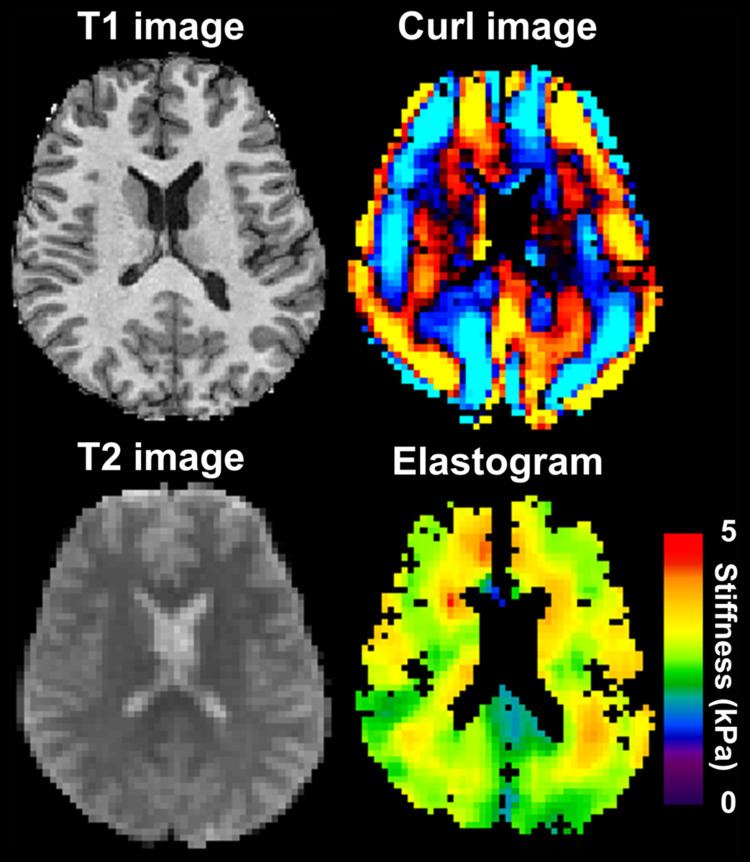 | ||
Magnetic resonance elastography (MRE) is a non-invasive medical imaging technique that measures the mechanical properties (stiffness) of soft tissues by introducing shear waves and imaging their propagation using MRI. Pathological tissues are often stiffer than the surrounding normal tissue. For instance, malignant breast tumors are much harder than healthy fibro-glandular tissue. This characteristic has been used by physicians for screening and diagnosis of many diseases, through palpation. MRE calculates the mechanical parameter as elicited by palpation, in a non-invasive and objective way.
Magnetic resonance elastography works by using an additional gradient waveform in the pulse sequence to sensitize the MRI scan to shear waves in the tissue. The shear waves are generated by an electro-mechanical transducer on the surface of the skin. Both the mechanical excitation and the motion sensitizing gradient are at the same frequency. This encodes the amplitude of the shear wave in the tissue in the phase of the MRI image. An algorithm can be used to extract a quantitative measure of tissue stiffness from the MRI in an elastogram.
Magnetic resonance elastography (MRE) was pioneered by researchers at the Mayo Clinic, the University of Michigan, and the University of Toronto, starting from the mid 1990s. MRE is being investigated to be used for a multitude of diseases that affect the tissue stiffness. It is currently being clinically used for the assessment of hepatic fibrosis, since it is well known that the liver stiffness increases with the progression of this disease. It is being investigated for the diagnosis of diseases and also for studying the treatment efficacy. For instance, this has been utilized in ablative treatments using high-intensity focused ultrasound where the treated necrosed tissue can be distinguished with MRE even in real time.
